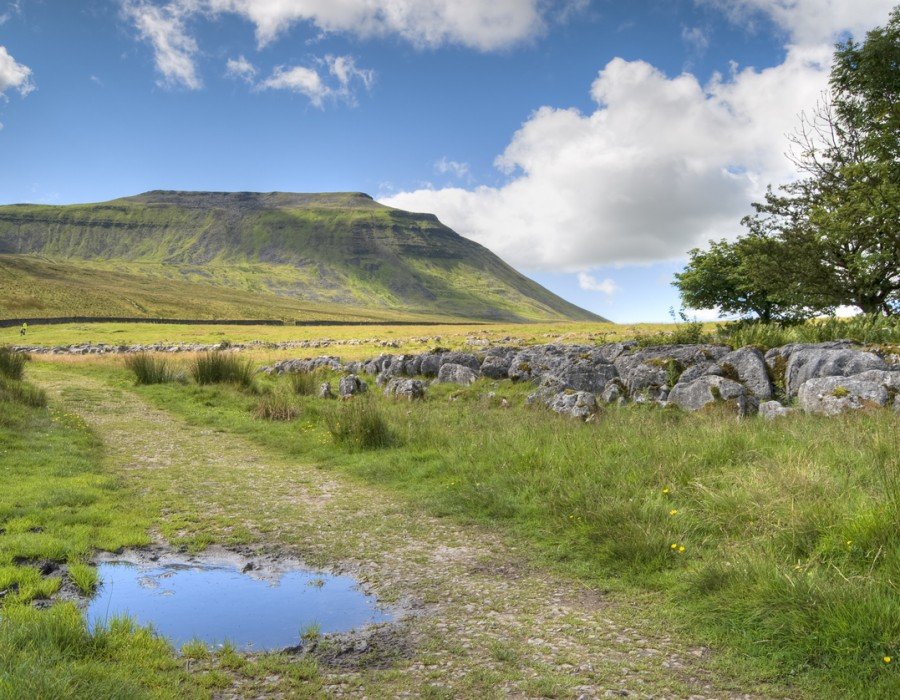Fitness and Performance
The highs and lows of Hiking

It’s summertime again and this year, the weather Gods have been great, providing us with ample opportunity to go out there and conquer some mountains! Physiotherapist Omkar chats to us about the ups and downs of what is becoming an increasingly popular pastime: hiking.
Whether it’s British mountains in the Lake District, the Scottish Highlands, a coastal walk in Cornwall, Wales’ Snowdon or farther afield on Mount Blanc, Alta Avia, Kilimanjaro or the Everest Base Camp, now is the perfect time to get up and go.
Summer means more daylight hours and extra time to challenge yourself with the Three Peaks Challenge, whether it be the Yorkshire, Welsh or national version. Some are motivated to undertake hiking these mountains to fundraise for local and national charities, others for personal gains in health and wellbeing.
Being a mountain hiker for the past five years, hiking and walking across the UK, I can reveal that it is not always as happy and easy as it looks on myth Facebook or Instagram posts. There’s no question that the views have been fantastic and worth every ounce of effort and training but hiking has its fair share of pain, tests and trials, which every hiker, amateur or experienced, has to go through.
Training for any Three Peaks Challenge is not easy and the mountains do test your physical, mental and emotional skills. As a wise man once said, “it is not the mountain we conquer, but ourselves”. It’s common to experience a few injuries and mishaps whilst hiking, so it always helps to have a first-aid-trained professional with you on your expedition.
What are the most common injuries hikers encounter?
Being a physiotherapist and expert in musculoskeletal conditions, my friends and colleagues who share my passion for hiking and mountain climbing, often ask me what the most common injuries are and how to prevent them.
Based on my experience, the most common musculoskeletal injuries in hikers and mountain climbers are:
- Ligament sprains
- Muscle strains
- Tendinopathy (mostly ankle, gluteal)
- Knee pain (PFJ, meniscus injury)
- Hip pain
- Low back pain
Ligament and ankle sprains: the key causes
The most common injuries are ligament sprains, which are commonplace amongst both amateur and experienced walkers. Ankle sprains also happen relatively frequently. Mostly, these injuries can be attributed to poor footwear and lack of ankle support. Personally, I have noted that walking in muddy, slippery conditions, prevalent mostly in the Peak District region, tend to increase the risk of this happening. It is also common when descending or due to slips, trips or falls. After the ankle, the second most common area for sprains is the knee ligaments and menisci. Twisting and quick movements, which occur mostly during the descent, along with underlying hip weakness, may predispose hikers to increased risk of ligament strains.
Muscle strains: the key causes
Muscle strains are commonplace amongst walkers and hikers. It’s essential to have good strength in your lower limb muscles, mainly quadriceps and hamstrings, as this is required when hiking both up and down mountains and hills. It is common to strain your muscles during a strenuous hike or a challenge. Most mountain hikers (mainly experienced ones) have poor flexibility and can suffer with muscle strains around the knee and ankle joints. If ignored, muscle strain may predispose you to muscle tears. Shin splints are common in amateur walkers who are just starting hiking or hill climbing.
Tendinopathies: are you at risk?
Tendinopathies are prevalent in more experienced, middle-aged walkers and hikers. The most common tendinopathy is achilles tendinopathy, though the gluteal area can be affected, too. Poor lower limb flexibility, faulty muscle biomechanics and recruitment pattern are all factors that can increase the chance of tendinopathies. Walking over rocky terrain in places like the Lake District and Wales, can increase the tendency to have muscle strain or tendinopathy.
Knee, hip and low back pain in hikers
From a joint perspective, I have already covered the ankle in detail. Knee pain is noted in hikers and walkers, which predisposes some walkers to ascend or descend with walking poles. Other than strains and sprains, increased knee pain may be due to issues with the patellofemoral joint or menisci.
Hip pain can be an underlying issue for some hikers. Personally, I struggled with this issue when starting out, due to poor hip strength and flexibility concerns. It is common to have increased strain on the hip muscles.
Many walkers are also troubled by low back pain. Most hikers and wild campers have a backpack, which is essential to carry layers, extra socks, snacks and hydration gear. This can impose strain across the lower back and predispose walkers to low back pain. A strong core is therefore essential for your posture, especially when you are covering greater distances.
Do you feel you have some of these issues? A physiotherapist can assess and evaluate your biomechanics and prescribe you an exercise programme to tackle these problems, which could prolong your walking mileage and walking years, so that you can hopefully avoid any future hiccups.
Keep an eye out for our strength and fitness workout programme for mountain climbers in a future blog…